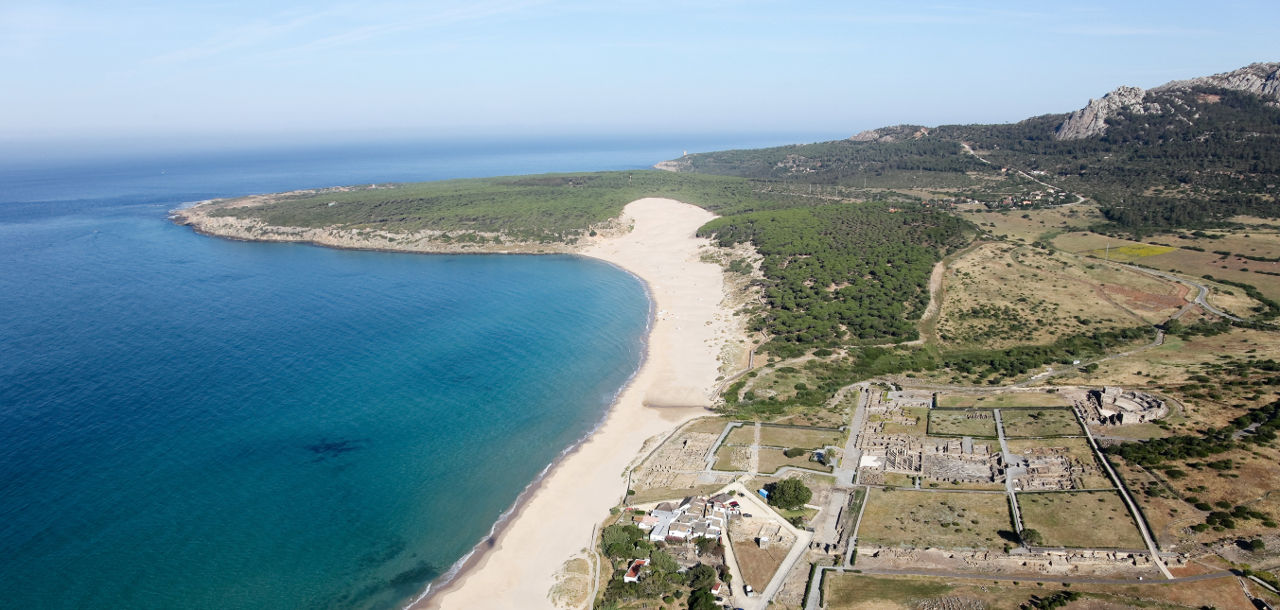Did the Romans hunt whales in the Mediterranean?
Commercial whaling, previously thought to have begun with Basque whalers around 1,000 AD, led to the disappearance of right whales (Eubalaena glacialis) and gray whales (Eschrichtius robustus) in the northeast Atlantic.
An international team, involving researchers from CNRS and the University of Montpellier, has used new molecular analysis techniques to study whale bones from the archaeological sites of Roman fish salting factories in the Strait of Gibraltar. The team showed that2,000 years ago, gray and right whales were present in the Mediterranean, probably to breed. This discovery, published on July 11, 2018 in Proceedings of the Royal Society of London B, significantly expands the known historical range of these two whale populations and raises the possibility that a forgotten Roman whaling industry contributed to their demise.

Photo: D. Bernal - Casasola, University of Cadiz (CC licence BY-SA)
Two species of whale in the Mediterranean
Molecular analyses of ancient bones reveal that two whale species, now absent from the Mediterranean, were probably common there during the Roman period, around 2,000 years ago. The study, by an interdisciplinary team of archaeological ecologists and geneticists, is published on July 11, 2018 in the journal Proceedings of the Royal Society of London B.
The two species are the North Atlantic right whale (Eubalaena glacialis), virtually exterminated after centuries of hunting and surviving today as an extremely threatened population off the east coast of North America; and the gray whale (Eschrichtius robustus), which has completely disappeared from the North Atlantic and is now restricted to the North Pacific. Prior to this study, the Mediterranean Sea was considered to be outside the historical range of these two species.
The bones were found in the Strait of Gibraltar by a team of archaeologists from theUniversity of Cádiz, led by study co-author Darío Bernal-Casasola. Both species are migratory, and their presence east of Gibraltar is a strong indication that they entered the Mediterranean to give birth. During the Roman period, the Gibraltar region was at the center of a massive fish processing industry, whose products were exported throughout the Roman Empire. The ruins of hundreds of factories, with large salting tanks, can still be seen in the area today. " The Romans were extremely efficient at exploiting marine resources, including large fish such as tuna," says Professor Bernal - Casasola, " so we wondered if they could also exploit whales."
The discovery of the presence of right and gray whales in the region makes this hypothesis plausible. " The Romans didn't have the technology to capture the large whales present in the Mediterranean today, which are deep-sea species," says Ana Rodrigues, CNRS researcher and lead author of the study. " But the right and gray whales, along with their calves, had to come very close to the coast, even being visible from land, and therefore represent tempting prey for local fishermen ". Both species could have been caught using small rowing boats and hand harpoons, as Basque whalers did centuries later.
DNA identification
Identification of the bones was made possible by ancient DNA and collagen fingerprinting molecular techniques. " Counter-intuitively, whales are often overlooked in archaeological studies, as their bones are often too fragmented to be identifiable by shape," says study co-author Camilla Speller, an archaeologist and geneticist at the University of York. " So these recent molecular methods open up new windows onto past ecosystems ".
Knowing that coastal whale species were present in the Mediterranean sheds new light on ancient historical sources. For example, " we can finally understand the first-century description by the famous Roman naturalist Pliny the Elder of killer whales attacking whales and their calves in the Bay of Cadiz," says Anne Charpentier, senior lecturer at the Centre for Functional and Evolutionary Ecology at the University of Montpellier and co-author of the article. " This scene doesn't fit in with anything that exists in this area today, but it corresponds perfectly with the ecology of right and gray whales ".
The authors of this study call on historians and archaeologists to re-examine their material in the light of this discovery, taking into account the fact that coastal whales were part of the Mediterranean marine ecosystem, and may have formed the basis of a Roman whaling industry. " It seems incredible that we have lost, and then forgotten, two major whale species in a region as well-studied as the Mediterranean ," says Ana Rodrigues. " It makes us wonder what else we might have forgotten ".